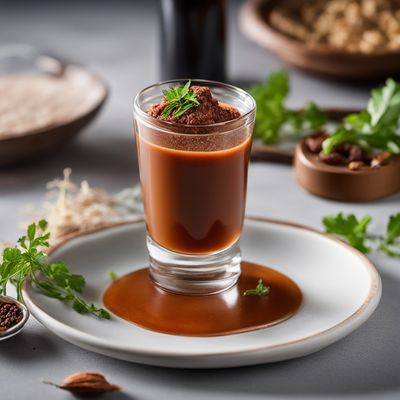
Ingredient
Port
The Wine of Kings
Port is a sweet, fortified wine with a rich, complex flavor profile. It is typically characterized by its notes of dark fruits, such as plum, cherry, and blackberry, along with hints of chocolate, caramel, and spices. Port has a velvety texture and a deep, ruby color, making it a luxurious and indulgent beverage.
Origins and history
Port wine has a long and storied history that dates back to the 17th century in Portugal's Douro Valley. It was originally created as a solution to preserve wine during long sea voyages. Over time, Port gained popularity and became associated with the British, who developed a taste for this unique wine. Today, Port is still produced in the Douro Valley and is considered one of Portugal's most iconic exports.
Nutritional information
Port wine is relatively high in calories and alcohol content compared to regular wines. It is also a source of antioxidants and may have some health benefits when consumed in moderation. However, it is important to note that excessive consumption of Port or any alcoholic beverage can have negative effects on health.
Allergens
May contain sulfites and alcohol allergens.
How to select
When selecting Port, look for reputable producers and brands that are known for their quality. Consider the style of Port you prefer, such as Tawny, Ruby, or Vintage, and choose accordingly. Pay attention to the age statement, as older Ports tend to be more complex and expensive. Additionally, check the bottle for any signs of leakage or damage, which may indicate poor storage conditions.
Storage recommendations
To maintain the quality of Port wine, store it in a cool, dark place, away from direct sunlight and extreme temperature fluctuations. Once opened, Port should be consumed within a few weeks. To prolong its shelf life, you can use a vacuum pump or inert gas to remove oxygen from the bottle and reseal it tightly. It is also recommended to store Port bottles upright to prevent the cork from drying out and spoiling the wine.
How to produce
Producing Port wine requires specific grape varieties, such as Touriga Nacional, Touriga Franca, and Tinta Roriz, which thrive in the Douro Valley's unique climate and soil. The grapes are harvested by hand and then crushed and fermented. During fermentation, grape brandy is added to stop the process and preserve the wine's natural sweetness. The wine is then aged in oak barrels for varying periods, depending on the desired style of Port.
Preparation tips
Port wine can be enjoyed on its own as a dessert wine or paired with various foods. It pairs well with strong cheeses, dark chocolate, nuts, and dried fruits. Port is also commonly used in cooking and can be incorporated into sauces, marinades, and desserts to add depth and richness of flavor.
Culinary uses
Port wine is commonly used in Portuguese cuisine, particularly in desserts and sauces. It is also enjoyed as a standalone beverage or paired with cheese and chocolate. Port is widely available in Portugal and is exported to many countries around the world.
Availability
Portugal, with the Douro Valley being the primary region of production. It is also available in many other countries, including the United Kingdom, the United States, and various European countries.
More ingredients from this category
Recipes using Port » Browse all

North Korean-style Stir-fried Water Spinach
Savory Spinach Delight: North Korean-style Stir-fried Water Spinach

Stir-Fried Water Spinach with Spicy Garlic Sauce
Fiery Wok Delight: Spicy Stir-Fried Water Spinach

Mie Kangkung with Spicy Peanut Sauce
Indonesian Delight: Mie Kangkung - A Spicy Peanut Infusion

Bengali-style Sotong Kangkung Curry
Spicy Seafood and Water Spinach Curry - A Bengali Delight

Cumberland Sauce Recipe
Tangy Delight: Cumberland Sauce Recipe

Savory Ukrainian Stir-Fried Water Spinach
Zesty Water Spinach Delight: A Ukrainian Twist on a Singaporean Classic

Lẩu mắm Châu Đốc - Vietnamese Fermented Fish Hot Pot
Umami Delight: Vietnamese Fermented Fish Hot Pot

Terrine de Foie Gras with Fig Compote
Decadent Duck Foie Gras Terrine with Sweet Fig Compote

Papaya Delight with a Twist
Portuguese Papaya Surprise

Adapted Adobong Kangkong with a Twist
Savory Spinach Stir-Fry: A Fusion of Filipino and Australian Flavors

Jamaican Rum Cake Recipe
Caribbean Delight: Jamaican Rum Cake

Colombian-Style Duck Liver Mousse with Port Wine
Exquisite Colombian Delight: Port-Infused Duck Liver Mousse
